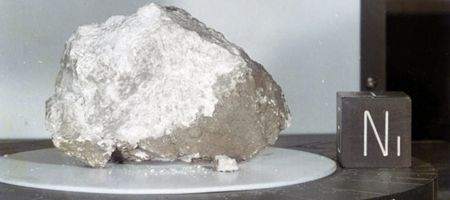New evidence of water in moon rock samples brought back by the Apollo mission is challenging the accepted view of how the moon formed.

A team from the University of Michigan says it’s found traces of water within the crystalline structure of mineral samples from the lunar highland upper crust. As the lunar highlands are thought to represent the original crust, crystallized from a magma ocean, the findings indicate that the early moon was wet and that the water there wasn’t lost as it formed.
This contradicts the accepted theory that the moon was formed from debris generated during a giant impact between Earth and another planetary body around the size of Mars.
“Because these are some of the oldest rocks from the moon, the water is inferred to have been in the moon when it formed,” says U-M’s Youxue Zhang.
“That is somewhat difficult to explain with the current popular moon-formation model, in which the moon formed by collecting the hot ejecta as the result of a super-giant impact of a Martian-size body with the proto-Earth. Under that model, the hot ejecta should have been degassed almost completely, eliminating all water.”
The team used Fourier-transform infrared spectroscopy to analyze the water content in grains of plagioclase feldspar from lunar anorthosites – highland rocks composed of more than 90 percent plagioclase. These are thought to have formed early in the moon’s history when plagioclase crystallized from a magma ocean and floated to the surface.
And, here, the team found about six parts per million of water.
“The surprise discovery of this work is that in lunar rocks, even in nominally water-free minerals such as plagioclase feldspar, the water content can be detected,” says Zhang.
The hydroxyl groups are evidence that the lunar interior contained significant water during the moon’s early molten state, before the crust solidified, and may have played a key role in the development of lunar basalts.
“The presence of water could imply a more prolonged solidification of the lunar magma ocean than the once-popular anhydrous moon scenario suggests,” says Hejiu Hui of the University of Notre Dame.
It’s not the first time that evidence of water has been found in Apollo lunar samples. In 2008, indigenous hydrogen was found, and inferred to be the water-related chemical species hydroxyl, in lunar volcanic glasses.
Hydroxyls have also been detected in other volcanic rocks and in the lunar regolith, the layer of fine powder and rock fragments that coats the lunar surface.






